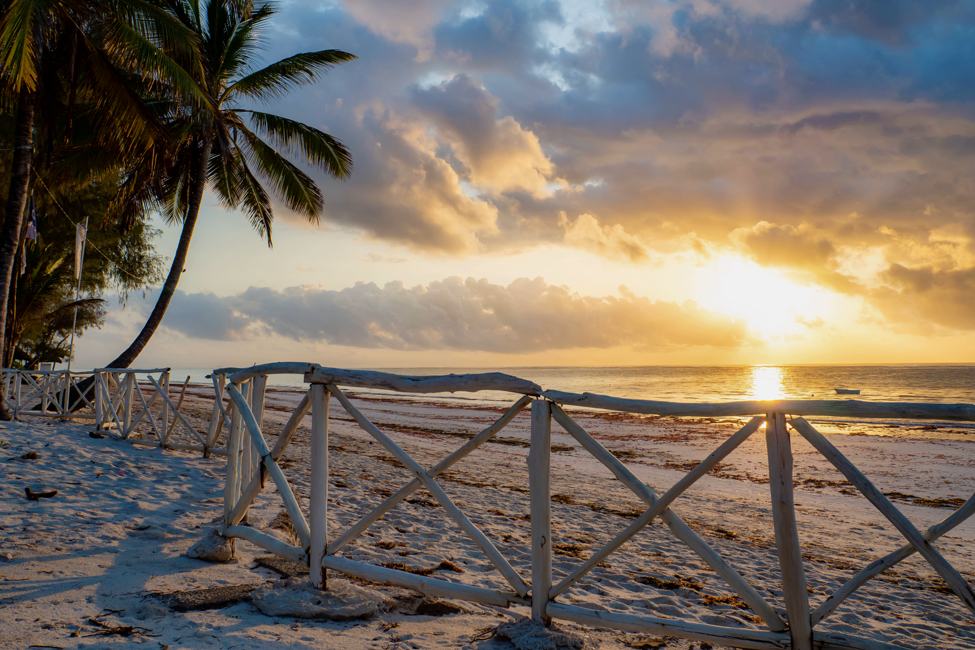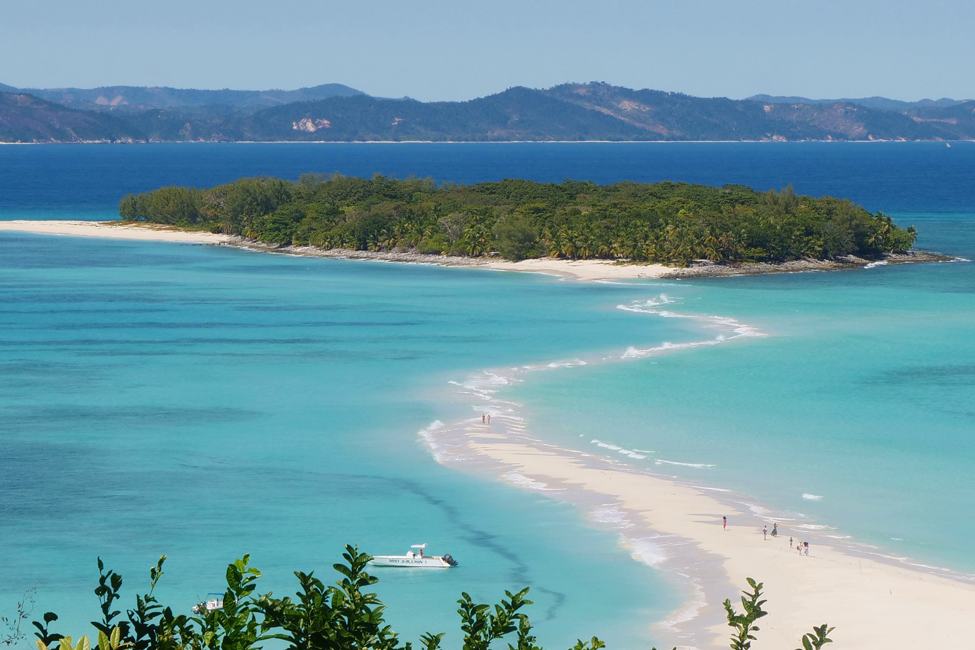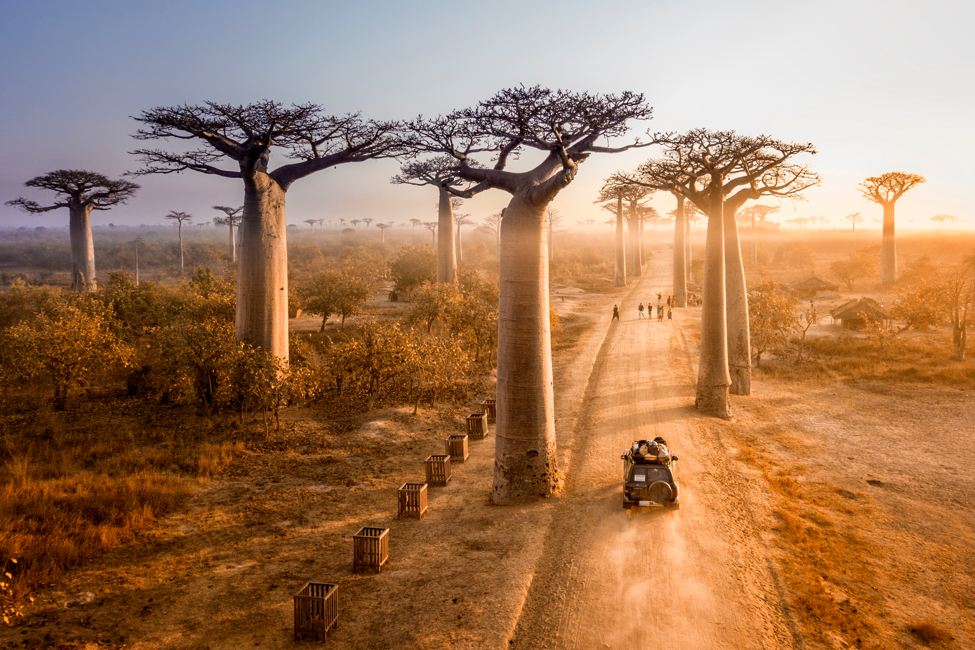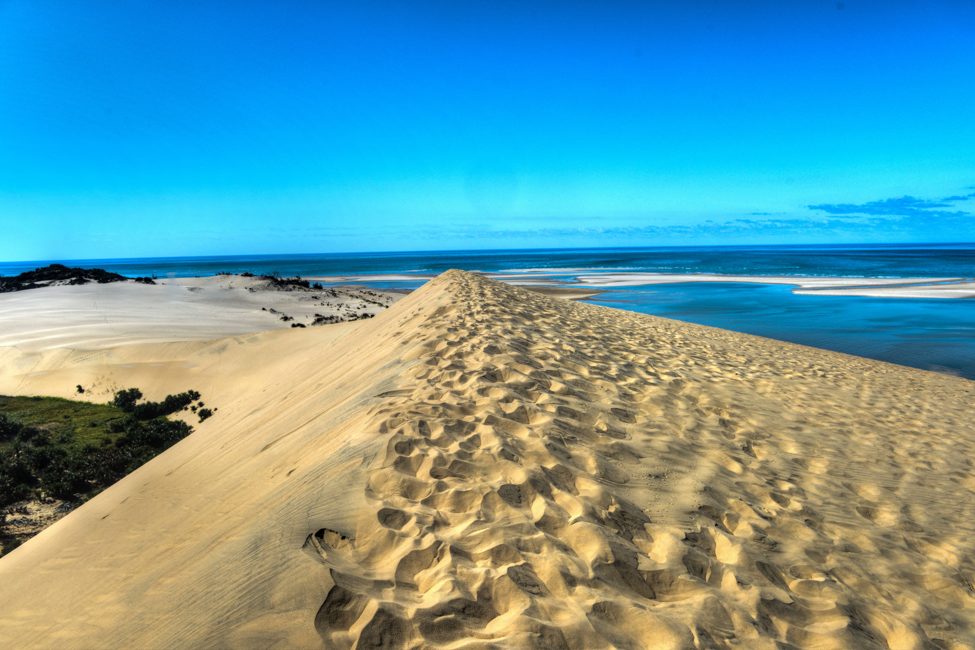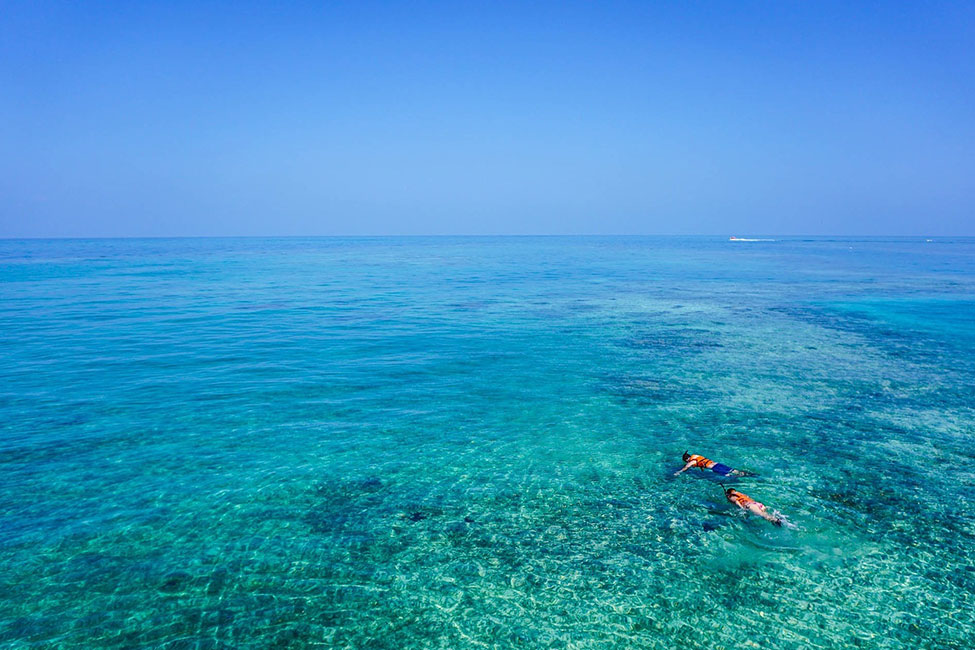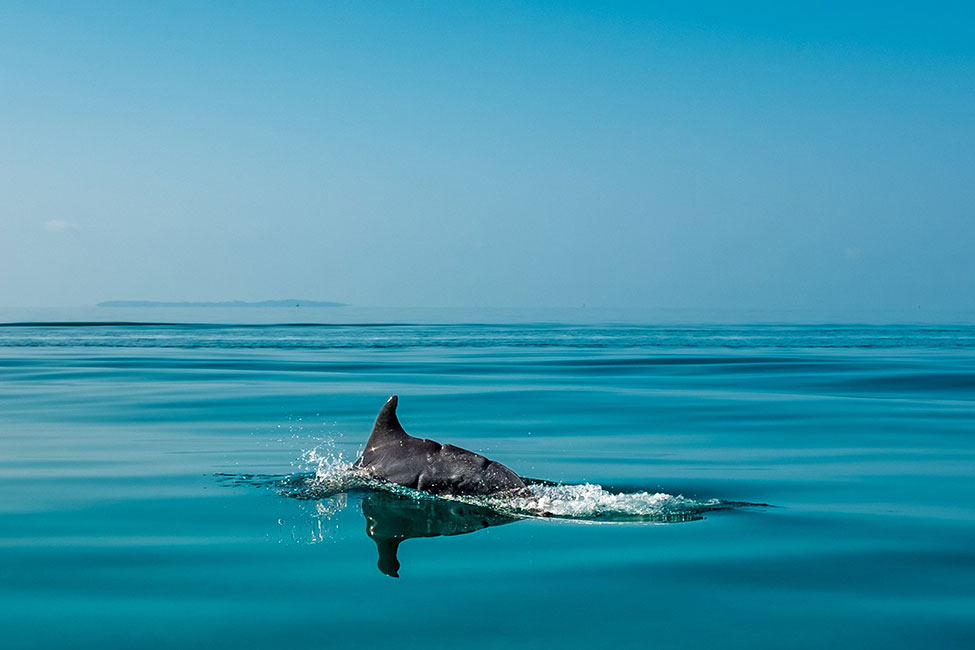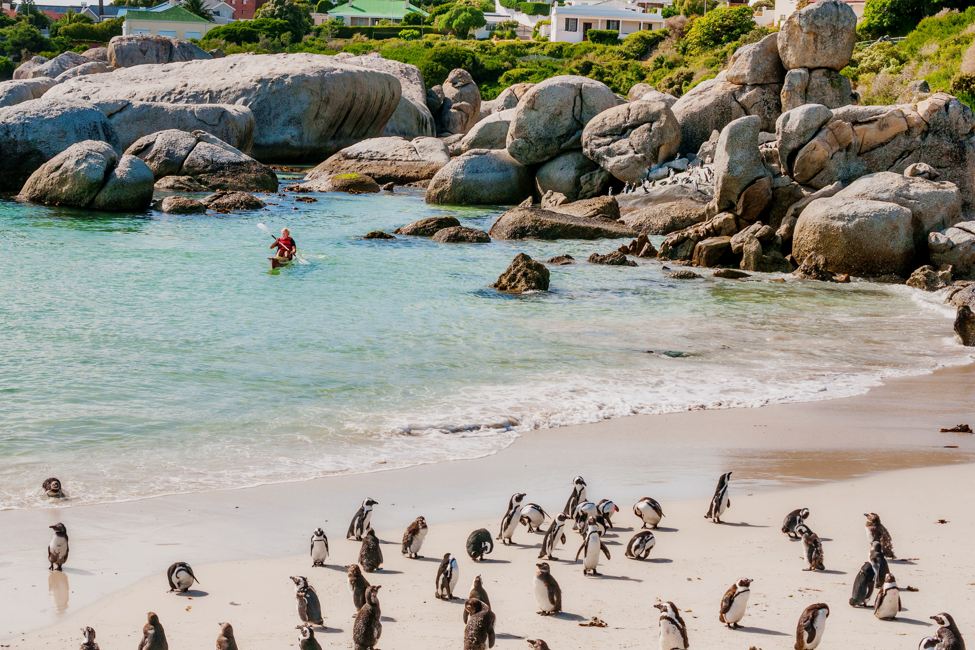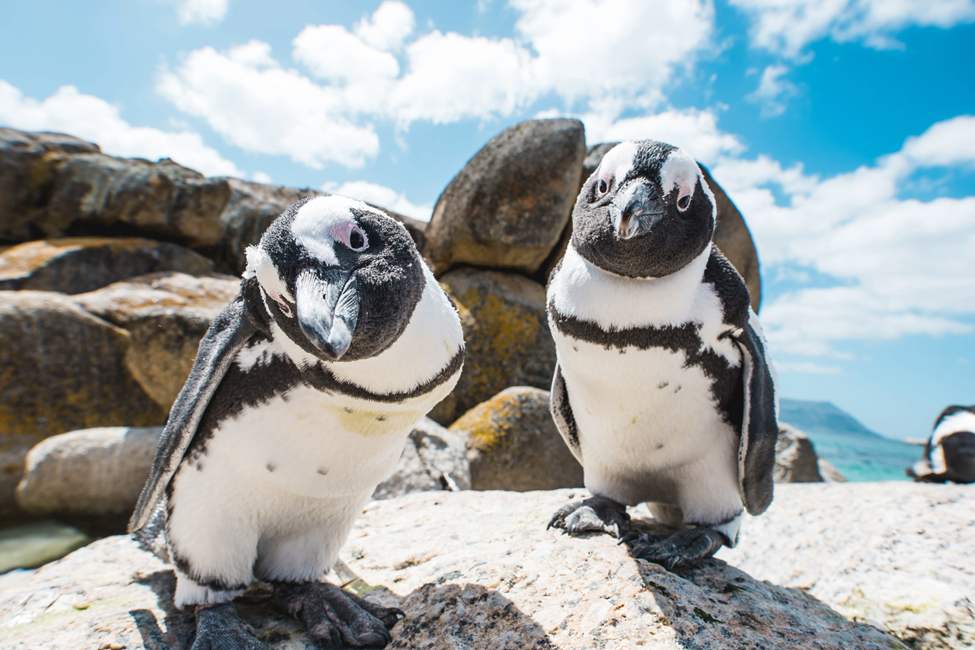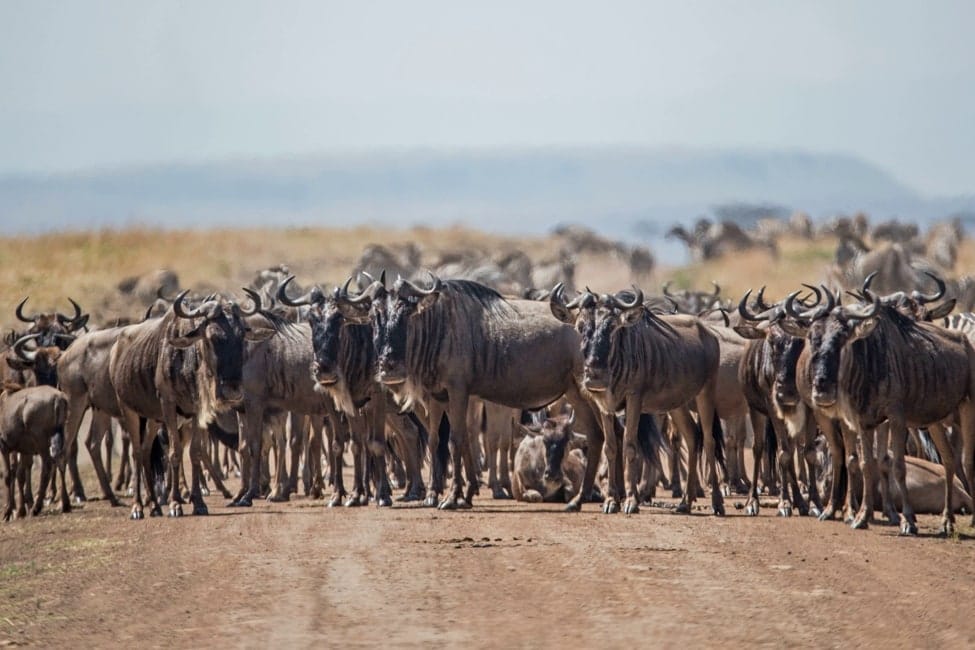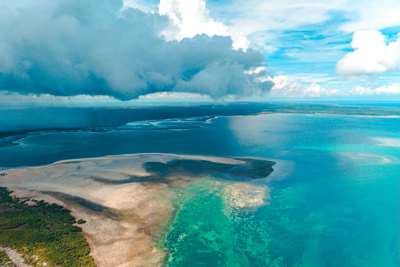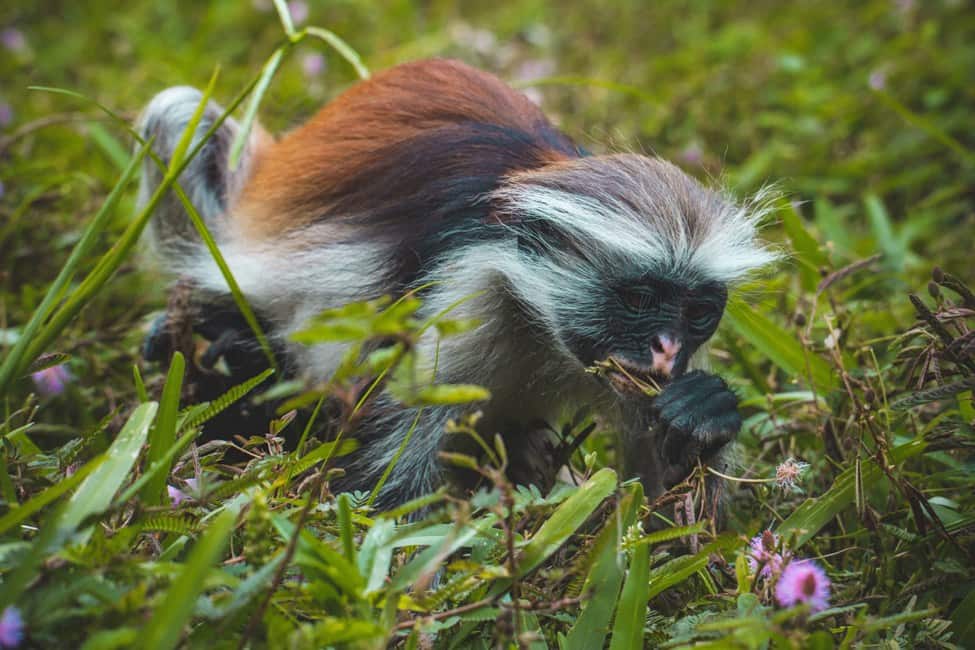The Definitive Guide to Africa’s Diving & Snorkeling Hotspots
While Africa is famous for its terrestrial wildlife, its waters also boast fascinating creatures. Here, you’ll find stunning underwater ecosystems that rival the picturesque landscapes of more traditional safari destinations.
From swimming alongside seals and whale sharks to delving the depths of the African Great Lakes, diving and snorkeling create a different kind of safari experience. Whether you’re drawn to majestic marine mammals, coral gardens teeming with activity, charismatic sharks, or colorful cichlids, Africa’s waters promise unforgettable experiences beneath the waves. Join us as we dive into our top options for diving and snorkeling in Africa.
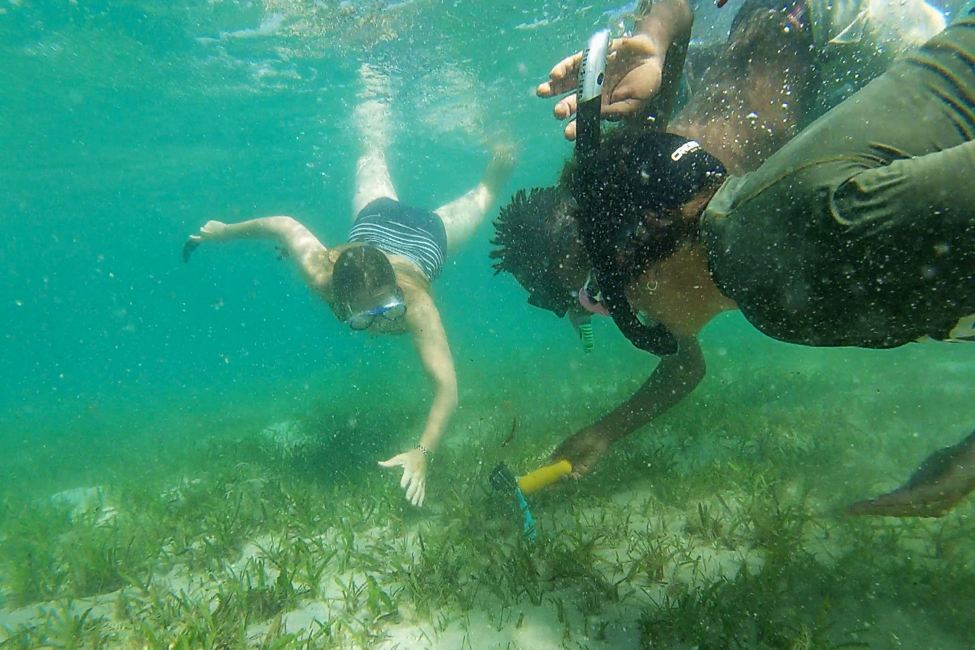
Snorkelers watch seahorses in the grassy seabed between Vilankulo and the Bazaruto Archipelago, Mozambique. Photo courtesy of Bahia Mar and ParCo.
Which is for you: snorkeling or diving?
Snorkeling and diving are both activities for exploring underwater environments, but that’s where the similarities end:
- Snorkeling takes place near the water’s surface and requires minimal equipment—typically a mask, snorkel (breathing tube), and fins.
- Divers go deeper and use more specialized gear, such as scuba tanks, regulators, and buoyancy control devices.
Just about anyone with basic swimming skills can quickly pick up snorkeling. But you need thorough training and certification to dive safely, and diving is not recommended for people with certain health conditions. If you want to dive on safari, visit your doctor to get the okay, then take some classes ahead of your departure. Although training courses are available at many African diving destinations, getting certified in advance means you can spend more time out in the water exploring—not just getting acquainted with the basics. International certification organizations with courses in the United States include PADI, SSI, and NAUI.
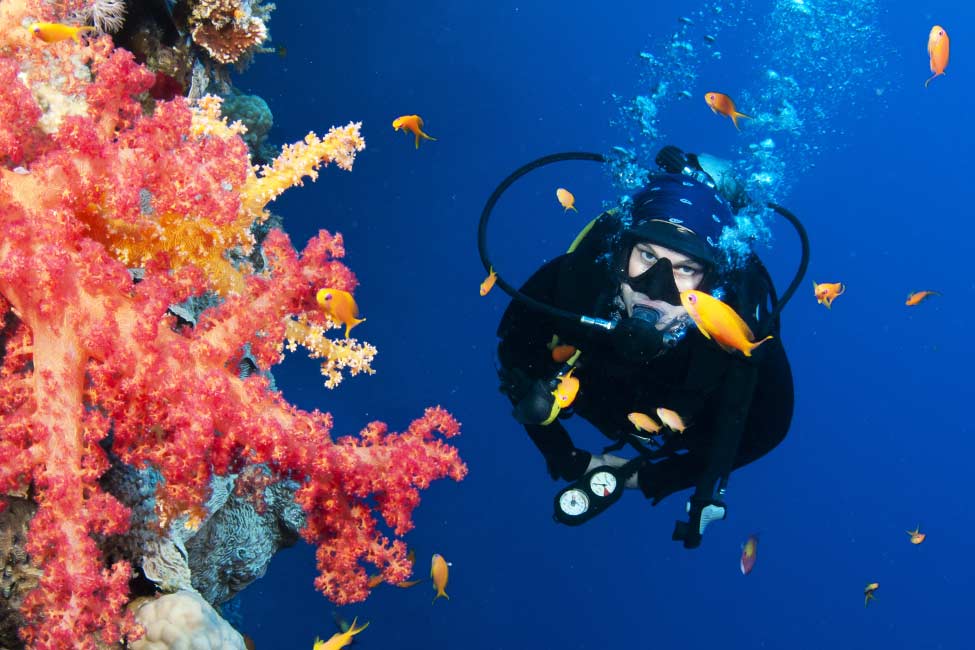
The Seychelles offers incredible scuba diving among healthy coral reefs.
Where are the best regions for diving in Africa?
The Indian Ocean coast and African Great Lakes are popular destinations for recreational snorkeling and scuba diving, and for good reason.
The Indian Ocean lies off East Africa and features both hard and soft corals, as well as a plenitude of marine life. From the Horn of Africa down to Northern Mozambique, Indian Ocean temperatures are mild year-round. In Southern Mozambique and South Africa, summer (from about November to March) brings the most pleasant temperatures.
Wendy Klein, an experienced diver who explored the Indian Ocean for the first time on an Ujuzi trip in 2022, said the seascape was very different from the Caribbean, which has only hard corals. “The Indian Ocean is really beautiful,” she said. “We saw whale sharks while we were there—just tons of marine life.”
For a freshwater experience, dive into the African Great Lakes. They stretch from Kenya in the north to Malawi in the south. Two of our favorites:
- Lake Tanganyika in Tanzania is the world’s second deepest lake. PADI Master Instructor Sarah Ann Wormald described it as “one of the world’s best freshwater dives.”
- Lake Malawi, also among the world’s largest lakes by volume, is an extremely popular diving destination thanks to calm, clear waters that are warm year-round and its hundreds of cichlid species—among the most colorful fish on earth.
What about recreational diving on Africa’s Atlantic Coast? It is far less popular. Its colder temperatures and poorer visibility generally make diving and snorkeling less rewarding.
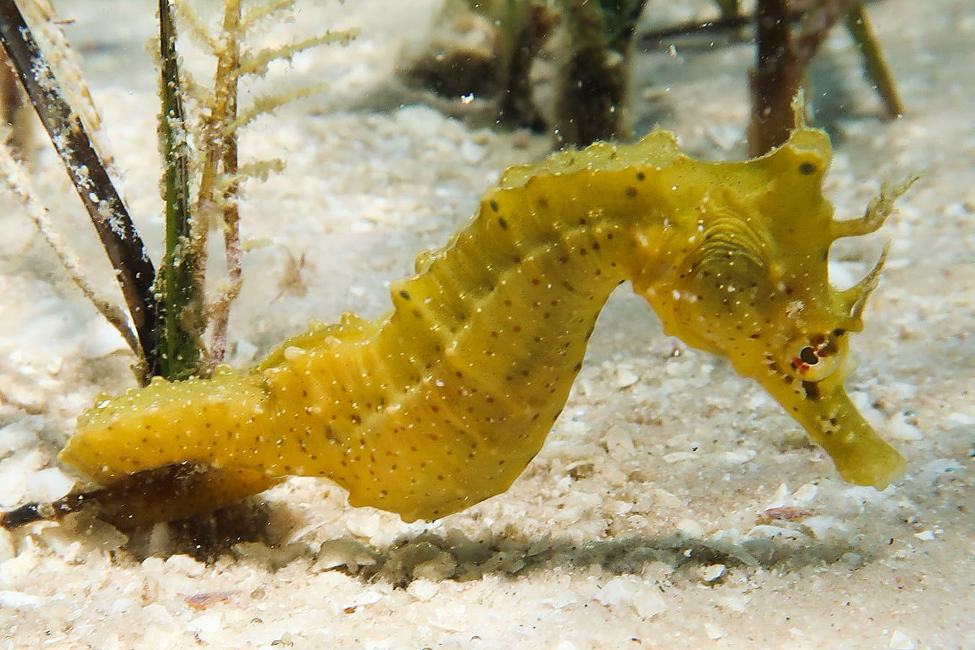
This seahorse photo was taken on an Indigo Seahorse Adventure off the coast of Vilankula, Mozambique. Photo courtesy of Bahia Mar and ParCo.
Bring your own equipment or rent?
If you’re an experienced snorkeler or diver, it can be reassuring to pack your own equipment with you. But if your trip includes many shorter stays at different destinations, that can be a lot to lug around. Klein opted for renting equipment for her Mozambique dives. “We had weight limitations for all the rest of our traveling, and our dive bags alone probably weigh 70 pounds each. So we left that stuff at home and used the gear that the dive shops had.”
She mentioned a slight learning curve because the rental equipment used metric measurements (meters, kilograms, Celsius, and bars). Her gear back home uses the imperial system (feet, pounds, Fahrenheit, and pounds-per-square-inch). “But that’s just stuff you deal with,” she said. “You figure it out.”
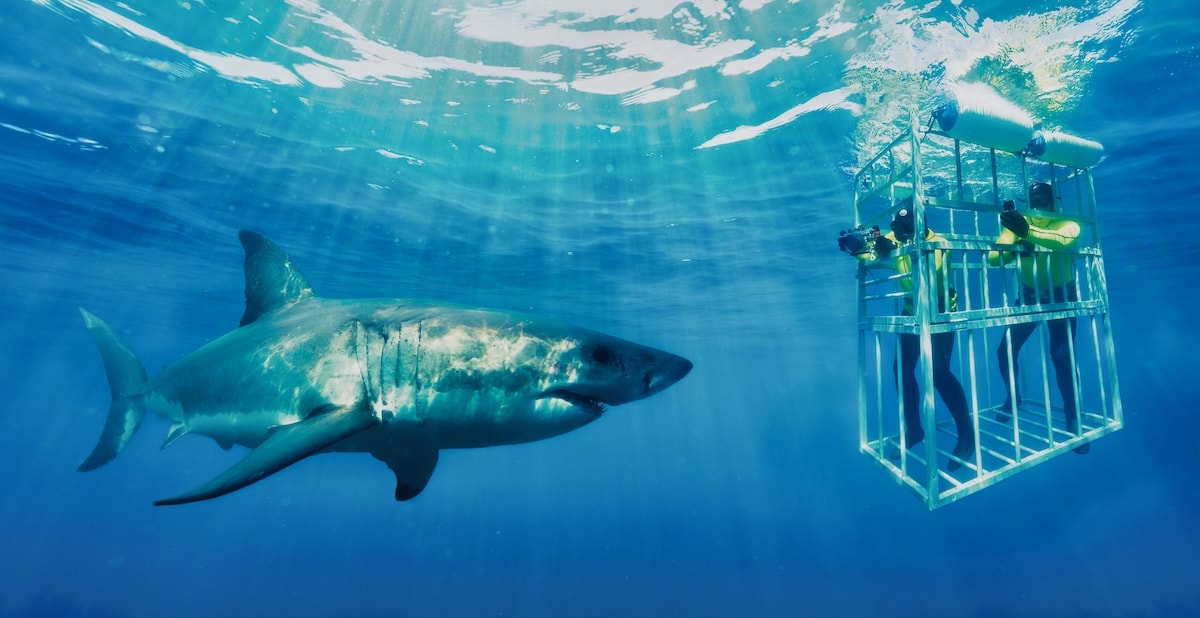
Shark Alley on the South African post is famous as a place to encounter great whites and copper sharks. Photo courtesy of South Africa Tourism.
Our favorite places for an underwater safari
Now that we’ve considered the big picture, let’s drill down to our favorite spots for underwater adventures. From Kenya’s coral reefs to the secluded coves of South Africa, here’s a list of some of Africa’s most captivating snorkeling and diving destinations.
Kenya: Diani Beach and Watamu
With its white sandy beaches and turquoise waters, Kenya‘s Diani Beach offers great snorkeling on its own. But it also provides quick access to Mombasa Marine National Park’s coral gardens, reef walls, and underwater caves. Sightings may include turtles, dolphins, moray eels, nudibranchs, and seahorses.
Watamu Marine National Park, about ninety miles north of Mombasa, is known for its shallow coral reefs. Snorkelers can explore stunning coral gardens just a short distance from the shore and find reef fish (over 600 species!), turtles, and moray eels. The nearby Malindi Marine National Park also offers outstanding diving opportunities.
Diving from mid-October to March also gives you the chance to see whale sharks—peaceful filter-feeders and the world’s largest fish, reaching 30 to 60 feet in length as adults!
Madagascar: Nosy Be and Toliara
Located in the Indian Ocean on the eastern edge of the Mozambique Channel, Madagascar is a large island nation ringed by a scattering of smaller islets.
One of these islets, Nosy Be, lies off the northwest coast of Madagascar. (Nosy means island in Malagasy, the national language.) The surrounding waters host picturesque coral reefs, making it ideal for snorkeling and diving. Encounter tropical fish, sea turtles, and the occasional whale shark.
The Toliara (or Tulear) region in southwestern Madagascar is known for its coral reefs, mangroves, and seagrass beds. Popular diving areas include Anakao, Ifaty, and Nosy Ve, where you can encounter resplendent fish, octopuses, and reef sharks.
Explore Madagascar on These Safaris
Malawi: Lake Malawi
Landlocked Lake Malawi, also known as Lago Nyasa, is among the largest and deepest lakes in Africa. With its clear waters, diverse aquatic life, and fascinating underwater rock formations, it’s well-loved by snorkelers and scuba divers alike. Swim into a rainbow of freshwater fish, particularly cichlids—the lake is home to an estimated 850 species. Other fish include tetras, air-breathing catfish, Lake Malawi sardines, and the mottled eel. There’s even a shipwreck site to explore!
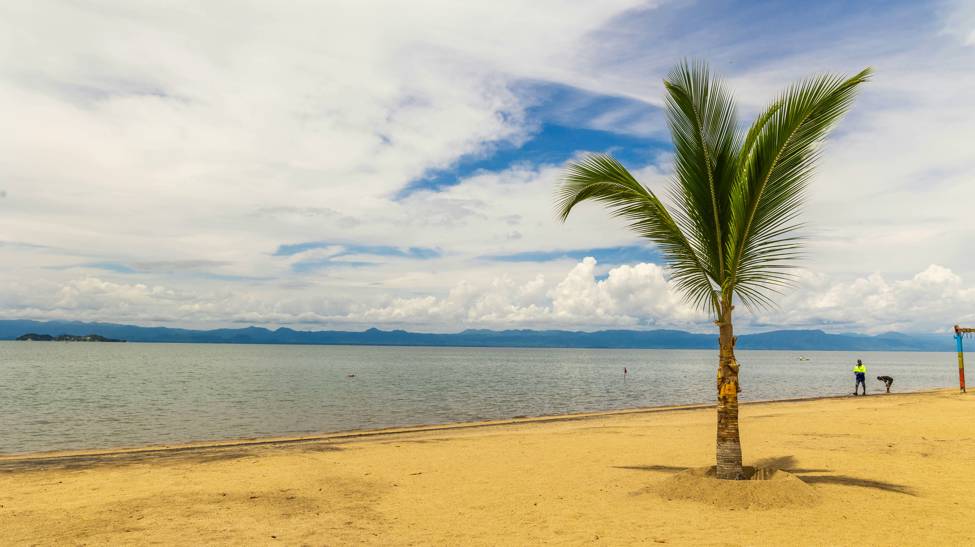
View of Lake Malawi from the shore in Mangochi township.
Mozambique: Tofo and Bazaruto Archipelago
Praia del Tofo (Tofo Beach), also known as “whale shark alley”, is home to beautiful whale sharks and manta rays year-round—but May to October are the best months for sightings. Klein stayed in Tofo during her Mozambique trip and not only encountered whale sharks, but also humpback whales. “The diving in Tofo was spectacular,” she said. “We heard a mother and baby humpback talking to each other. You almost expected to see them swim up under you—that’s how close they sounded like they were. It was just such a cool experience.”
Further up the coast, you’ll find the seaside town of Vilankulo, which is the gateway to the Bazaruto Archipelago. This area is ideal for snorkeling, with plenty of bays to explore around the islands, including Santa Carolina and Margaruque. The most famous stretch is Two-Mile Reef, a shallow barrier reef within Bazaruto National Park of colorful corals that host sea turtles, starfish, crocodile fish, dolphins, blue spotted stingrays, and the occasional dugong. It runs between Bazaruto Island’s southern sand dunes and beautiful Benguerra Island.
While in Vilankulo, experience a one-of-a-kind of snorkeling adventure: a seahorse safari! These safaris were created by a local community organization to fight poaching of seahorses, which were becoming endangered in the area due to overharvesting. You take a dhow sailboat to the shallow seagrass beds where seahorses live, then enter the waters for a better look. Revenue is reinvested into conservation and community development—a win for people and for seahorses!
Explore Mozambique’s Coast on These Safaris
Seychelles
Northeast of Madagascar, the Seychelles archipelago comprises more than 100 islands in the midst of the Indian Ocean. Snorkelers can explore shallow reefs just off the beaches, swim with sea turtles, and experience fascinating fish, rays, and reef sharks. In the eastern part of the archipelago, the Aldabra Atoll hosts a population of dugongs, a marine mammal related to manatees.
In the heart of Seychelles, Sainte Anne Marine National Park is unparalleled for its stunning coral reefs, which are teeming with life. Snorkel through the warm, clear waters to find yourself in the kaleidoscope of colors created by branching corals, brain corals, and more. Sainte Anne Marine National Park serves as a sanctuary for prized species like hawksbill and green sea turtles, seahorses, starfish, giant clams, eagle rays, and bottlenose dolphins. Best of all, it is easily accessible from the main island of Mahé.
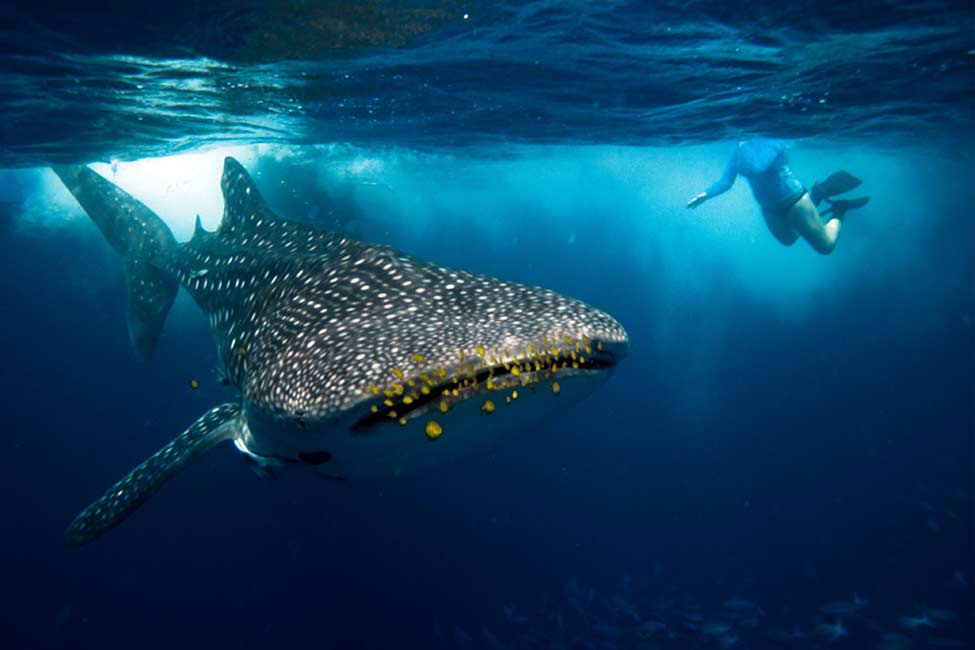
Peaceful whale sharks are among the many wonderful creatures to be seen while exploring the Indian Ocean.
South Africa: Western Cape and iSimangaliso
When you snorkel in Hout Bay in the Western Cape, you’ll likely find curious Cape fur seals swimming around you. These seals are agile and inquisitive, often darting and spinning gracefully in the shallows. With kelp forests, rocky reefs, and clear waters providing an ideal habitat for maritime animals, you may also spot fish, octopuses, and other captivating creatures.
Interested in something a little more heart-pumping? Try Shark Alley, an area on the Western Cape near Gansbaai. This area is historically famous for a large population of great white sharks, although in recent years their numbers have decreased as orcas (aka killer whales) have moved into the area to feed on the sharks. But some remain, along with copper sharks, which grow up to 11 feet long and are known locally as “bronze whalers.”
To see the sharks, you’ll float inside a protected cage attached to the side of a large boat. Since the top of the cage is above the water level, you don’t need an air tank—you simply bob up whenever you want to take a breath. The rest of the time you can spend submerged, appreciating the beauty and power of these magnificent predators as they swim around you!
For year-round warm-water exploration, Sodwana Bay in iSimangaliso Wetland Park on the Indian Ocean Coast is an incredible place to visit. With spots suited to different skill levels and preferences, it’s great for both beginners and those with more experience. The water temperature in this region remains comfortably mild, ranging from 68°F to 83°F throughout the year, ensuring that it never feels too cold. Whale sharks are easier to spot during South Africa‘s summer months.
Explore South Africa’s Coasts
Tanzania: Zanzibar and Mafia Archipelagos
The Zanzibar archipelago off Tanzania’s mainland is renowned for its crystal-clear waters, unsullied sea fan colonies and coral reefs, and varied ocean life. Popular dive sites include Mnemba Atoll, the Menai Bay Conservation Area, and the Leven Bank. Divers can encounter a kaleidoscope of coral gardens, tropical fish, turtles, dolphins, and manta rays. The archipelago’s second largest island, Pemba, features excellent diving opportunities with steep drop-offs, underwater pinnacles, and strong currents.
Further south, the smaller Mafia Archipelago is a hidden gem for diving enthusiasts, offering impressive coral reefs and uncrowded dive sites. It is best known for its whale sharks, which stop through the area every October through March on their annual migration.
On the mainland of Tanzania, there is the enormous Lake Tanganyika to explore. The “Tan” in “Tanzania” comes from this lake’s name. It’s not only the longest lake in the world, but also one of the most ancient at more than one million years old. Lake Tanganyika is home to numerous unique freshwater species found only here, including more than 250 cichlid species.
Explore Tanzania’s Archipelagos on These Safaris
Plan Your Safari
These are just a few of the top diving and snorkeling destinations in Africa, each offering unique underwater experiences and opportunities to explore the region’s rich marine biodiversity. Whether you’re a beginner or an advanced explorer of the deep, Africa’s waters have something to offer for everyone.
Contact Ujuzi to plan your safari today!
Sign up for the Ujuzi Newsletter!
From top travel tips to innovative safaris and conservation movement, get inspired to plan your next African safari!
By submitting this form, you are consenting to receive marketing emails from: . You can revoke your consent to receive emails at any time by using the SafeUnsubscribe® link, found at the bottom of every email. Emails are serviced by Constant Contact


